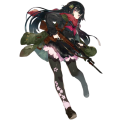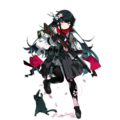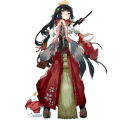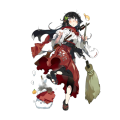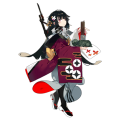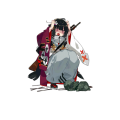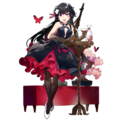Ranking of this Doll's specs relative to other Dolls of the same type.
Type 100
| Type 100 | Quotes |
Type 100 228 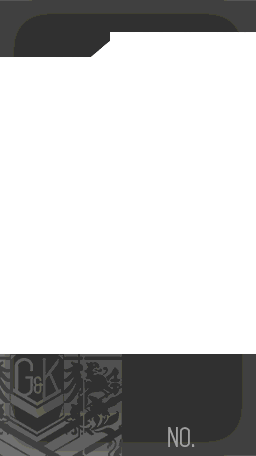 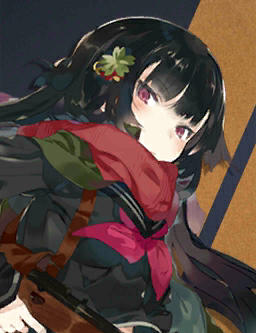 | |
| Gun Information | |
|---|---|
| Full name | Type 100 submachine gun |
| Country of origin | Imperial Japan |
| Manufacturer | Nambu Arms Manufacturing Company |
| Game Information | |
| Faction | Griffin & Kryuger |
| Manufactured / Revised by |
I.O.P. |
| Voice actor | Kakuma Ai |
| Artist | かれい |
| Released on | CN (樱花), TW (一〇〇式), KR (100식), EN (100 Shiki), JP (一〇〇式) |
| Chibi Animation | |
| Variant:
Click the marked area to switch between animations. For details regarding animations, please see Animations on the Wiki. | |
| View page template | |
How to obtain
NORMALHEAVY Timer 2:19:00. See T-Doll Production for details.
DROP Not obtainable as a drop.
REWARD First-time login reward in Japan version during pre-register campaign, at August 1st to September 30th, 2018.
Exclusive Equipment
Union Skill
There is no union skill for this T-Doll.
Stats / Data
| 106(x1) → 212(x1) / 1060(x5) | 25(x1) / 85(x5) | 20(x1) / 60(x5) |
|
| ||||||||
|
| ||||||||
| 12 | 0 | ||||||||
| 5% | 50% | ||||||||
| 15 |
Ranking of this Doll's specs relative to every other Doll.
Weapon Background
The Type 100 submachine gun (一〇〇式機関短銃, or Hyaku-shiki kikan-tanjū) was a Japanese submachine gun used during World War II, and the only submachine gun produced by Japan in any quantity.[1]
Japan was surprisingly late in introducing a submachine gun to its armed forces. Prior to the late 1930's, the Imperial Japanese military had purchased around 6000 MP-18 submachine guns from Switzerland and Austria, which they would use during the invasion of China in 1937. It wouldn't be until after 1937 that work would begin on a domestically-developed submachine gun. After earlier prototypes designed and built by the Nambu Arms Manufacturing Company proved inadequate, a new set of requirements were drafted up by the army in August of 1937. These requirements mandated a simpler design based on the imported European "Bergmann Type" submachine guns, which had been used effectively in both Battles of Shanghai by Japanese marines.
These new requirements resulted in the creation of the Experimental Model 3 submachine gun in 1938. The earliest version was known as the Model 3A, and while it was a step in the right direction over the earlier prototypes, they suffered from some design issues. After some modifications an improved Model 3B was introduced in April of 1939. The Model 3B received generally positive results during testing, and it was recommended to produce a batch of 200 units for military field tests with infantry, cavalry, and reserve units. Further requirements were made for increased accuracy and a way to mount the standard Type 30 bayonet used with the Arisaka series of bolt-action rifles.
After these tests, a new Model 3C was introduced in November of 1939. The Model 3C included a number of minor improvements, and also added a new double-slot muzzle brake. After another round of testing, the Model 3C was formally adopted by the Imperial Japanese army in 1940 as the Type 100 submachine gun (this initial 'early war' version of the Type 100 is known in Western documents as the 'Type 100/40'). However, no major order was made for the new weapon, as the interest of the army had turned to the new 7.7mm Type 99 light machine gun. There was simply no need for a submachine gun in the Imperial Army's current tactics.
Under a low-priority military contract, the Type 100 began to be deployed in August 1942. Production was very limited, with only 1,000 units being made during this time, of which around 200 were converted to folding stock models for use by army paratroopers. Limited numbers of the early Type 100 model were delivered to the Solomon Islands in late 1942 for additional military trials. A small batch was delivered to Guadalcanal, but the rest of the shipments destined for that area were sunk before reaching their target. A few very early Type 100 models, without the muzzle brake, but with a bipod and a sight up to 1,500 meters (the "cavalry variant" of the Model 3B), were captured by the British in the late stages of the Burma Campaign, brought in by Japanese reinforcements.
As the war continued, the demand for submachine guns increased greatly. In January 1944, larger scale production of the Type 100 started. A number of changes were made to simplify the Type 100, in order to increase production speed and reduce the cost of manufacture. This 'substitute standard' was applied not only to the Type 100, but to many 'late war' Japanese weapons, including the Type 99 Arisaka rifle. This change in manufacturing led to the later 1944 model of the Type 100, known in the West as the 'Type 100/44'. The 1944 variant was slightly longer, with simple iron sights and a greatly simplified muzzle brake consisting of two ports drilled in the barrel. The large bayonet mounting bar was eliminated, with the bayonet now intended to be fitted directly over the barrel instead. Consequently, the muzzle protruded more from its perforated jacket. Many corners were cut in production, leaving a large number of late war Type 100s with plainly finished stocks and roughly welded metal. Despite their rough appearance, these weapons still demonstrated good reliability with low recoil and satisfactory accuracy for close-range work. Some 7,500 of the Type 100/44 pattern were made produced in total.
Character Background
Official character description: A doll with a shy, introverted personality. Besides being high-minded and courteous, she is quite strict with herself. However, maybe because her aims are too high, she tries to overdo it in battle so much that she often ends up just going around in circles. Due to this side of hers, she may unexpectedly require some special attention from her teammates.
Gallery
Main artwork
Gallery consisting of artworks used primarily in-game. For information on how to obtain certain costumes, see Skin Catalogue.
-
Profile image
-
Full artwork
-
Full damaged artwork
-
Neural Upgrade Profile image
-
Neural Upgrade Full artwork
-
Neural Upgrade Full damaged artwork
-
"Armed Shrine Maiden" Full artwork
-
"Armed Shrine Maiden" Full damaged artwork
-
"Treasure Buried Deep Within" Full artwork
-
"Treasure Buried Deep Within" Full damaged artwork
-
"Kagura Vestments" Full artwork
-
"Kagura Vestments" Full damaged artwork
-
"Tale of the Butterflies" Full artwork
-
"Tale of the Butterflies" Full damaged artwork
Alternative artwork
Alternate gallery consisting of artworks with slight alterations as well as miscellaneous artworks.
-
Official Character sheet for Type 100 (CN)
-
Character preview of Type 100 (JP)
-
"Chime of the New Year" Login Wallpaper illustrated by 細重ソウジ
-
"Frozen Nights Symphony" Login wallpaper illustrated by 薯子Imoko
-
2020 New years Login wallpaper illustrated by ???
-
"Strange Tales Beneath The Rafters" Login wallpaper illustrated by ???.
-
"Night in the Galaxy" Login wallpaper illustrated by 黒井ススム
-
Girls' Frontline Orchestra 2019 illustration.
Trivia
- During World War II, Japanese paratroopers were given a disassembled Type 100 packed in a canvas bag. This was similar to American paratroopers being given a disassembled M1 Garand packed in a Griswold bag.[2]
- Originally a JP server exclusive T-Doll, Type 100 would later be added to the CN, TW, KR, and EN server construction pools.
- Type 100 was released on the CN (DSky/BiliBili) servers under the alias "樱花", which translates to "Cherry Blossoms", or "Sakura".
- Her character bio is quite a bit longer and more detailed on her character sheet for JP than her sheets for the other servers (see the "Gallery" section above for her CN and JP character sheets).
References
| List of T-Dolls |
|---|
















